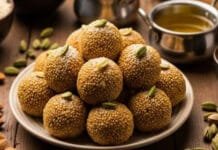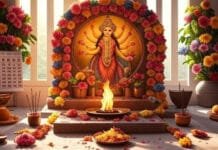INVC NEWS
Haridwar : Every year, the month of January witnesses the vibrant festivities of Makar Sankranti, a Hindu festival dedicated to the solar deity, Surya. Its profound significance can be traced back to the Vedas, especially the Rigveda, which encapsulates the importance of Surya through the sacred Gayatri Mantra.
Makar Sankranti Across India
Makar Sankranti stands as one of India’s major festivals, celebrated in diverse forms throughout the country and Nepal. This joyous occasion occurs when the sun enters the zodiac sign of Capricorn during the month of Poush.
Astrological Precision
As per astrologers and the Panchang (Hindu calendar), Makar Sankranti is observed on the 15th of January. On this day, Surya Dev transitions from Sagittarius to Capricorn at precisely 2:54 AM. The auspicious moments for rituals and festivities are carefully calculated for this significant day.
Black Attire and the Chillest Day
Wearing black attire is a prominent custom on Makar Sankranti, an exception to the usual prohibition of black during auspicious occasions. Since it marks the final day of the winter solstice, it is considered the coldest day of the season.
Nutrient-Rich Khichdi Tradition
Khichdi, a wholesome dish filled with essential nutrients, takes center stage during Makar Sankranti. Its consumption not only contributes to overall well-being but also aids digestion if consumed at night. The ease of digestion makes it a suitable choice for an evening meal.
Sun and Saturn’s Celestial Harmony
Donating sesame seeds on this day is especially significant, as it aligns with the entry of Surya into Capricorn, a zodiac ruled by Saturn. Despite being father and son, Surya and Saturn are believed to harbor animosity. Yet, Surya’s presence in Saturn’s realm is seen as a symbol of love.
The Gorakhnath Katha Tradition
A fascinating narrative associated with Makar Sankranti revolves around Baba Gorakhnath. During an invasion, the yogis led by Baba Gorakhnath faced challenges in preparing meals. The act of offering khichdi during adversity is believed to have profound effects.
Dietary Abstentions for Spiritual Alignment
On Makar Sankranti, refraining from substances like alcohol, cigarettes, or tobacco is advised. The day calls for avoiding tamasic (heavy) foods, spicy dishes, and abstaining from garlic, onions, and meat.
Pious Rituals: Sun Worship
To commence the day, an early morning ritual bath is recommended, followed by setting up an altar for Lord Surya. Adorning the deity with turmeric, sandalwood paste, and offering auspicious items like akshat (rice grains) and red flowers are customary practices.
Lord Surya, Lord Vishnu, and Mother Lakshmi Divine Blessings
Makar Sankranti is not merely a celestial event but a celebration infused with spirituality, customs, and shared joy. Seeking blessings from Lord Surya, Lord Vishnu, and Mother Lakshmi on this day promises divine grace and prosperity.
Frequently Asked Questions
- Why is wearing black significant on Makar Sankranti?
- Black attire is considered auspicious on this day, signifying respect for the festival’s uniqueness.
- What is the significance of donating sesame seeds during Makar Sankranti?
- Offering sesame seeds is believed to bring prosperity and seek blessings from Lord Surya.
- Why is khichdi associated with Makar Sankranti?
- Baba Gorakhnath introduced khichdi during a war, symbolizing a quick and nourishing meal.
- What are the traditional bathing rituals on Makar Sankranti?
- Bathing with water containing sesame seeds or oil is a practice to dispel misfortune and invite success.
Why are tamsik foods avoided on Makar Sankranti?
- Avoiding garlic, onion, and meat is advised to maintain a sattvic and pure environment during the festival.
Remember, every tradition and ritual is a thread connecting us to our cultural tapestry. Happy Makar Sankranti!
- Avoiding garlic, onion, and meat is advised to maintain a sattvic and pure environment during the festival.
















